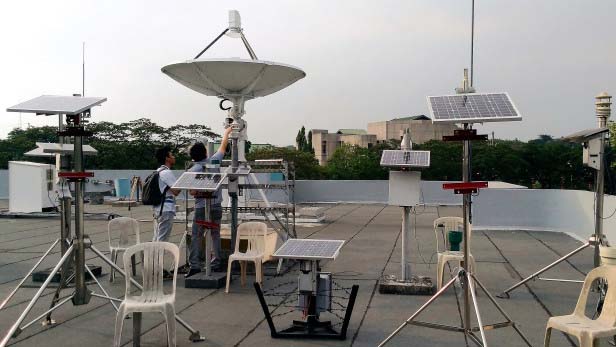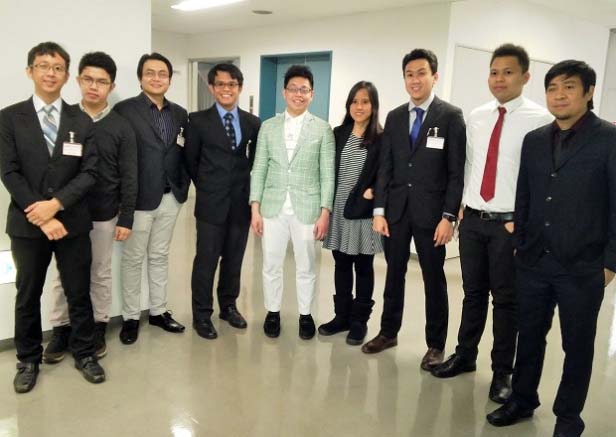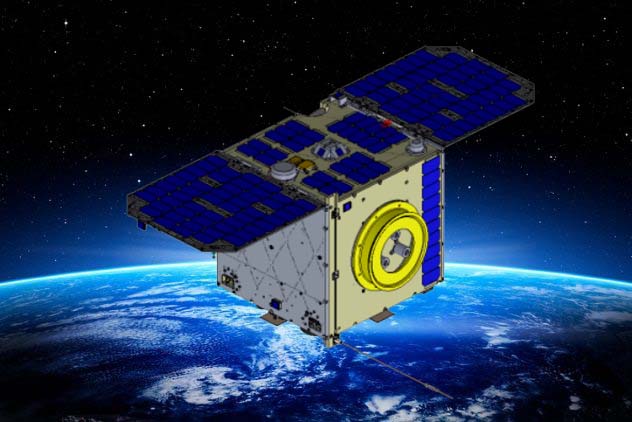The second Filipino-made microsatellite – Diwata 2 was successfully launched. DOST now adds more funding to support the country’s space program.
If there are still doubts on the ability of the Department of Science and Technology (DOST) to send satellites in space, those doubts should be gone by now.
It’s because after about two years the DOST headed by Secretary Fortunato de la Peña had completed the building of the second satellite owned by the Philippines and on October 29 successfully launched and deployed the Diwata 2 microsatellite (50-kg class) in collaboration with the Japanese government through the Japan Aerospace Exploration Agency (JAXA).
JAXA flew Diwata 2 into space from Tanegashima Space Center in Kagoshima, Japan, on board its H-IIA F40 rocket. The microsatellite was one of the small satellites piggybacked with the main payloads IBUKI-2, also known as GOSAT-2 (JAXA’s Second Greenhouse Gases Observing Satellite), and KhalifaSat, a remote-sensing Earth observation satellite developed by the United Arab Emirates’ (UAE) Mohammed bin Rashid Space Centre (MBRSC).
Later in the same day, Diwata’s receiving station named PEDRO (Philippine Earth Data Resources Observation) was able to make an initial contact with Diwata 2 (which indicated a successful launch and deployment), as reported by the University of the Philippines Diliman (UPD), Quezon City. PEDRO is located at Advanced Science and Technology Institute (DOST-ASTI) building inside the University of the Philippines, Diliman Campus, in Quezon City.
The contact shows PEDRO can now read the satellite’s status, among them, vital signs such as fully-charged batteries, normal power consumption, and good communication link.
PEDRO’s engineers at ASTI sent commands to Diwata 2 as they continue the initial checking of the satellite in the first week of the launch.
Recall that Diwata-1 was launched to the International Space Station (ISS) on March 23, 2016 aboard the American spacecraft Cygnus and, later, deployed in its orbit on April 27 by JAXA’s Japanese Experimental Module (JEM) nicknamed “Kibo” (Hope) some 400 kilometers from the surface of the Earth. Diwata 2’s planned orbit is over 200 kms. higher than her sibling, giving the former a longer life.
The first microsatellite was designed, developed, and assembled by nine pioneering Filipino engineers at the time of then DOST Secretary Mario G. Montejo.
It was made possible through the guidance of Japanese scientists and engineers from the Tohoku University (TU) and Hokkaido University (HU).
In the local scene, the DOST partnered with the UPD as implementing agency of the Philippine Scientific Earth Observation Microsatellite (Phil-Microsat) Program, the three-year Space Technology Development Program (STDP) with a funding from DOST of Php840.82 million, covering two microsatellites, a ground receiving station at UPD, training facility for space technology, and a cube satellite (cubesat) name Maya-1 launched and deployed to space ahead of Diwata 2.

The Advanced Science and Technology Institute (DOST-ASTI) inside the UPD Campus now headed by UPD Prof. Joel Joseph S. Marciano, Jr is also a big part of the Phil-Microsat Program, and houses the ground receiving station (GRS).
In relation with this, the Philippine Council for Industry, Energy and Emerging Technology (DOST-PCIEERD) was tasked to monitor the program’s implementation.
As enunciated by Montejo, the space technology research program would enable, among other functions, the government to generate real-time data expected to help the country improve its disaster-response mechanisms.
“The satellite will also aid the rest of the country in terms of agriculture and tourism, with the satellite data that will help farmers decide what crops to plant and where, while also capturing the country’s natural wonders,” he added.
Filipino leaders hailed Diwata-1’s deployment in space as historic, marking the country’s first satellite built by Filipino engineers. DOST’s space technology research initiative started in 2014.
And the DOST is not about to rest on its laurels.
Additional Php245 million budget in 2019
De la Peña, in a text message on Saturday, November 3, mentioned that DOST has additional budget of Php245 million for the STDP in 2019.
“There are many related projects (for next year,” he said.
The DOST chief said they include:
- Starting the Scholarship Program in MS Electronics and Communication Engineering with specialization in Space Engineering.
- Forming the STAMINA Group of HEIs (higher education institutes) for Sapce Technology involving eight universities expected to work together in different related DOST Project which will speed up the building of capability to develop and build our own space satellites right here inthe Philippines.
- Local manufacturing companies which later be suppliers or even exporters of the needed parts and components in building microsatellites or even larger ones will become part of the DOST R&D (research and development) projects mentioned in Item 2.
- The training of Filipino researchers, engineers, technologists abroad will continue to build up our human resources pool in this area.
- Filipino companies/conglomerates will be encouraged to expand their operations in these new areas.
- Two additional receiving stations similar to PEDRO will be set up — one in Visayas and one in Mindanao.
- Training on the interpretation of and satellite-sourced information will be conducted.
- A Maya-2 cubesat might be in the planning board also.
- Use of information coming from other satellites shall be maximized through collaboration or subscription.
- Lobbying for the passage of the Space Agency Bill (for a Philippine Space Agency — PhilSA) will continue. PhilSA will help in policy-making and will direct the country’s STDP.

The Magnificent 9
Filipino DOST scholar-engineers also were behind Diwata 2, some of them part of the “Magnificent 9” who built Diwata-1.
They include Gerwin Guba, John Leur Labrador, and the new ones, Julie Banatao, Paolo Violan, and Leonardo Paet.
The original Magnificent 9 (a name given by this journalist because of their being pioneers), are Guba, Labrador, Harold Bryan Paler, Benjamin Jonah Magallon, Julian Marvick Oliveros , Juan Paolo Espiritu, Delburg Mitchao, Ariston Gonzalez, and Kaye Kristine Vergel (the only female) among the original satellite builders.
Diwata-1 is expected to be out of commission this month as gravity pulls her down to Earth from her orbit after over two years in space. She was supposed to last only a year, but Diwata-1 exceeded the predicted span of her life in space.
But not after transmitting thousands of photographs to PEDRO through its over 5,000 passes over the Philippines. Diwata-1’s images are already being used by various government agencies. (EKU)

